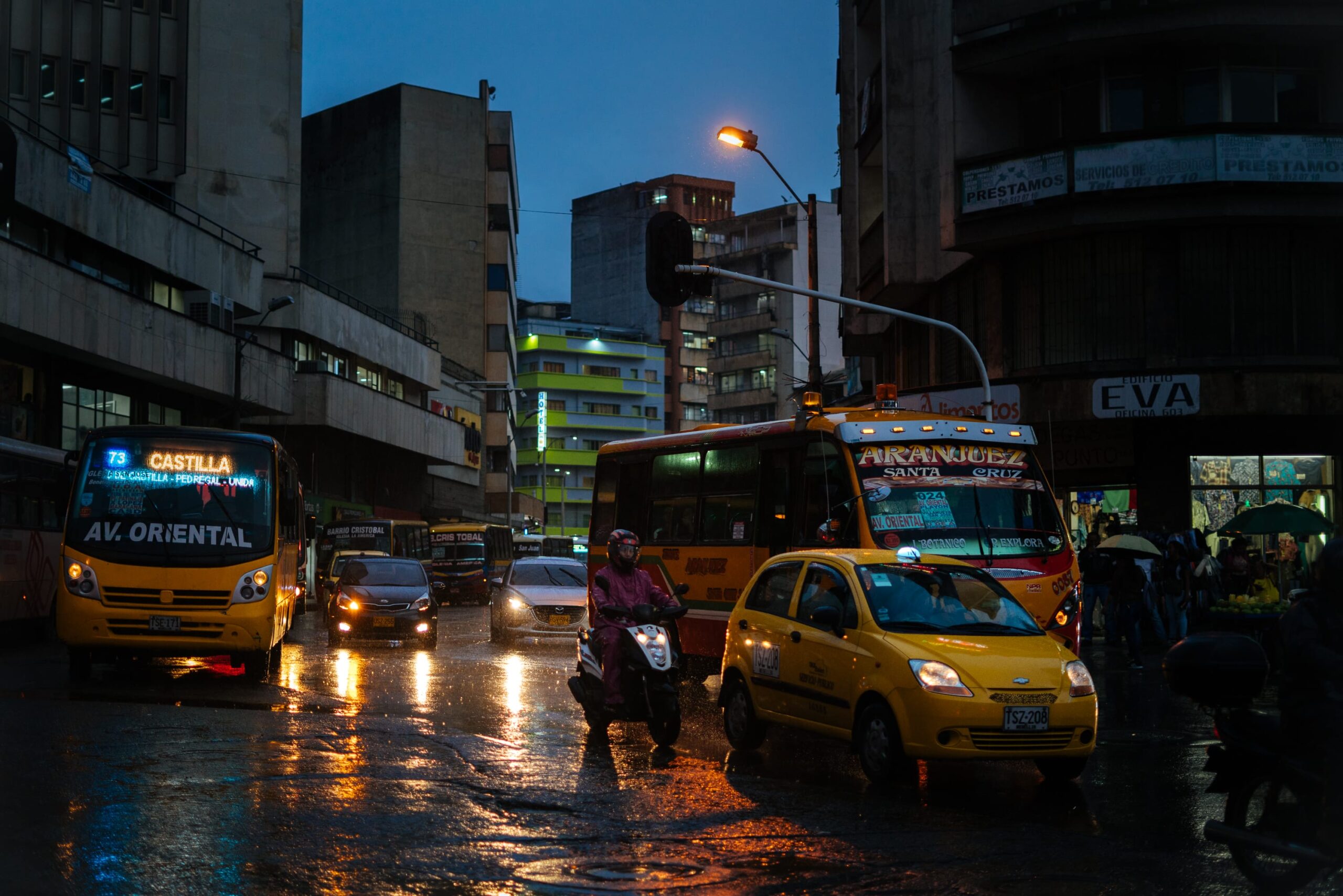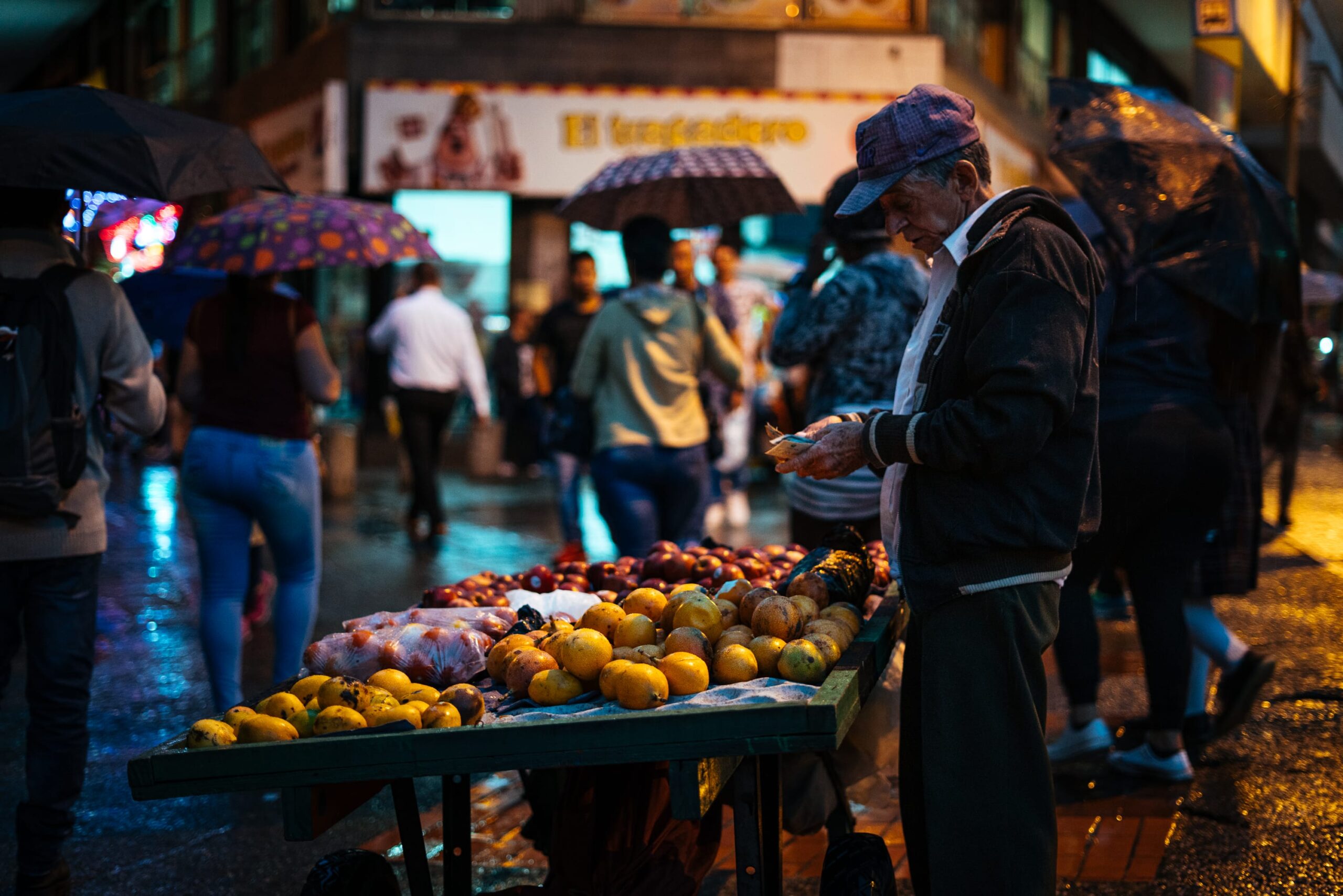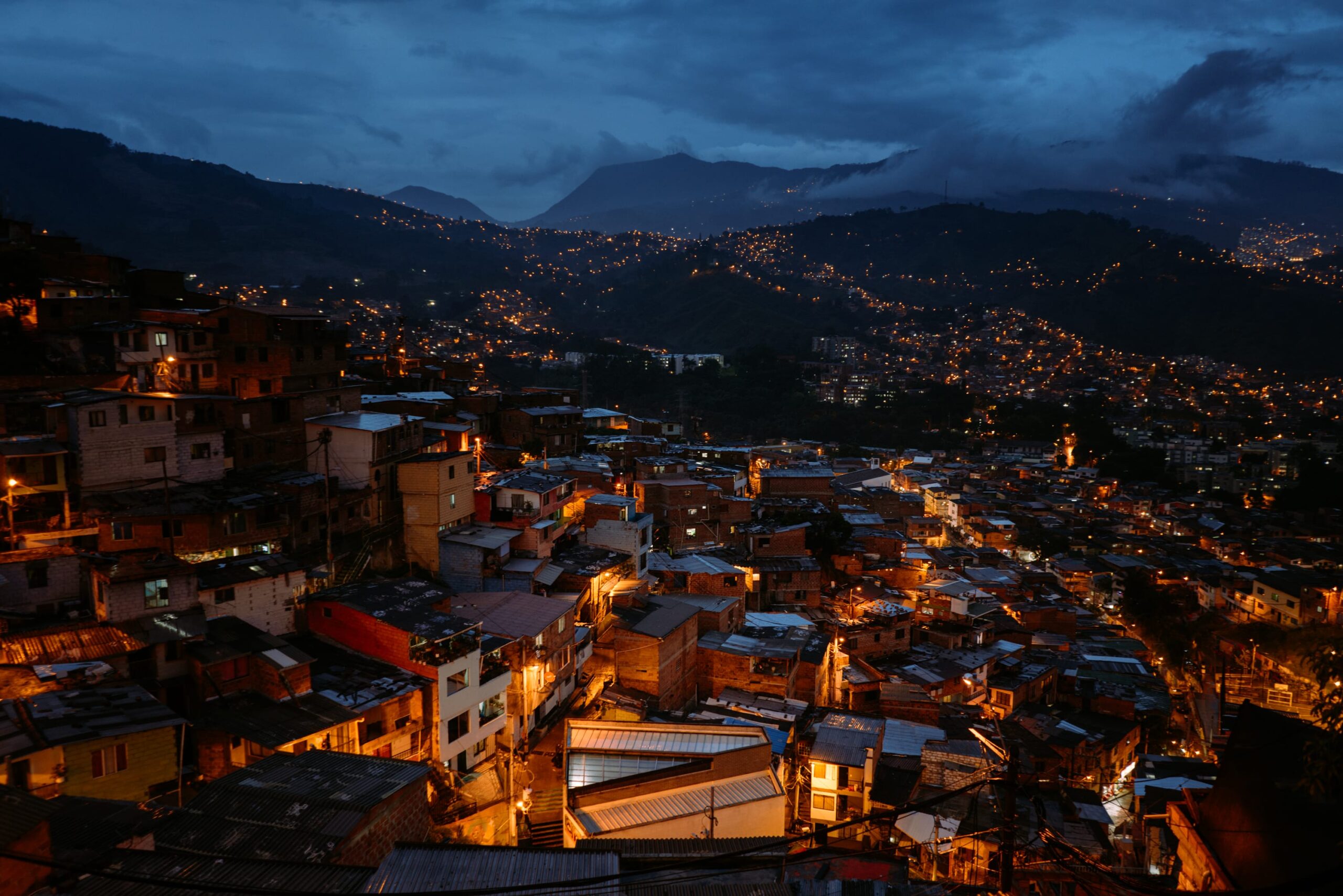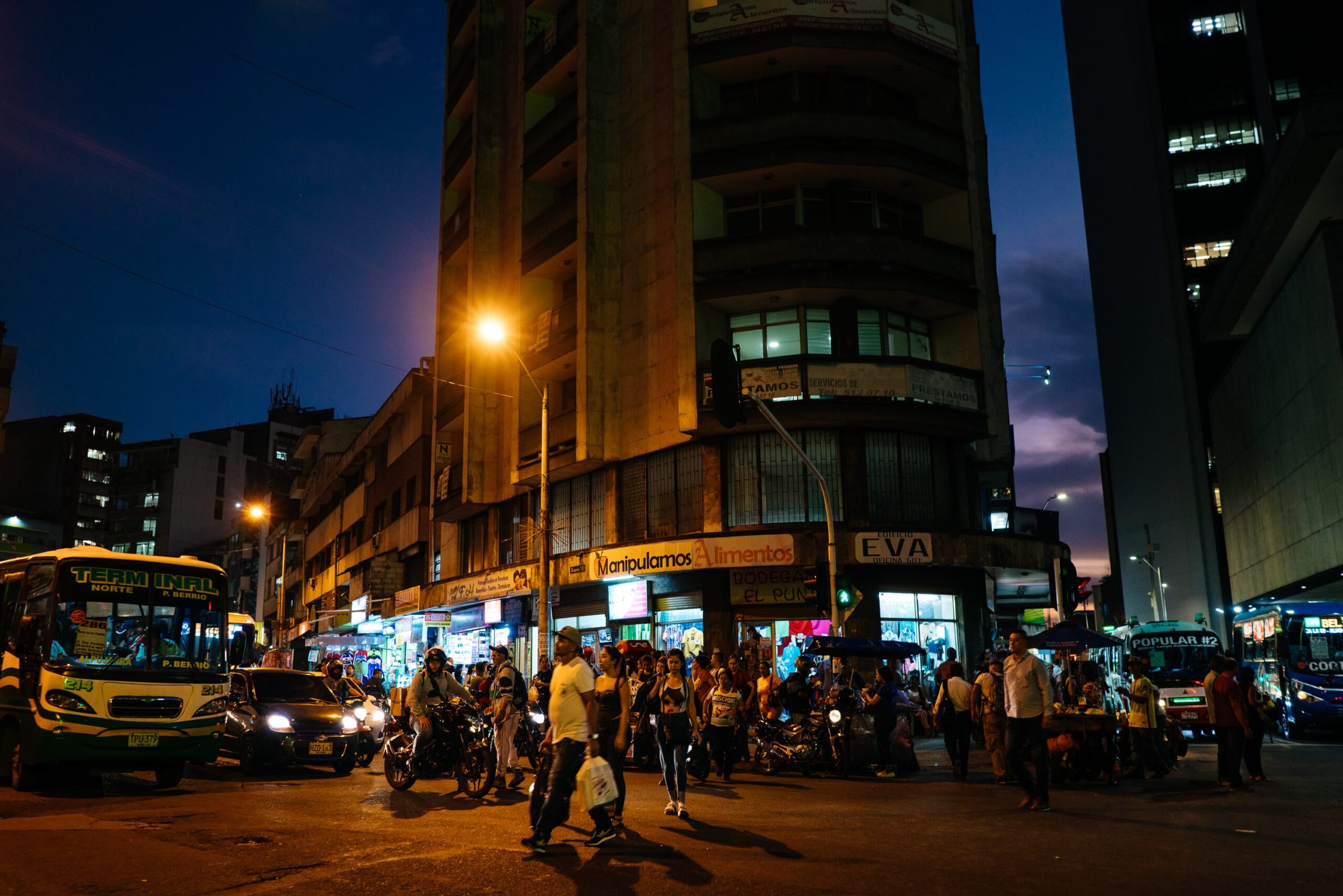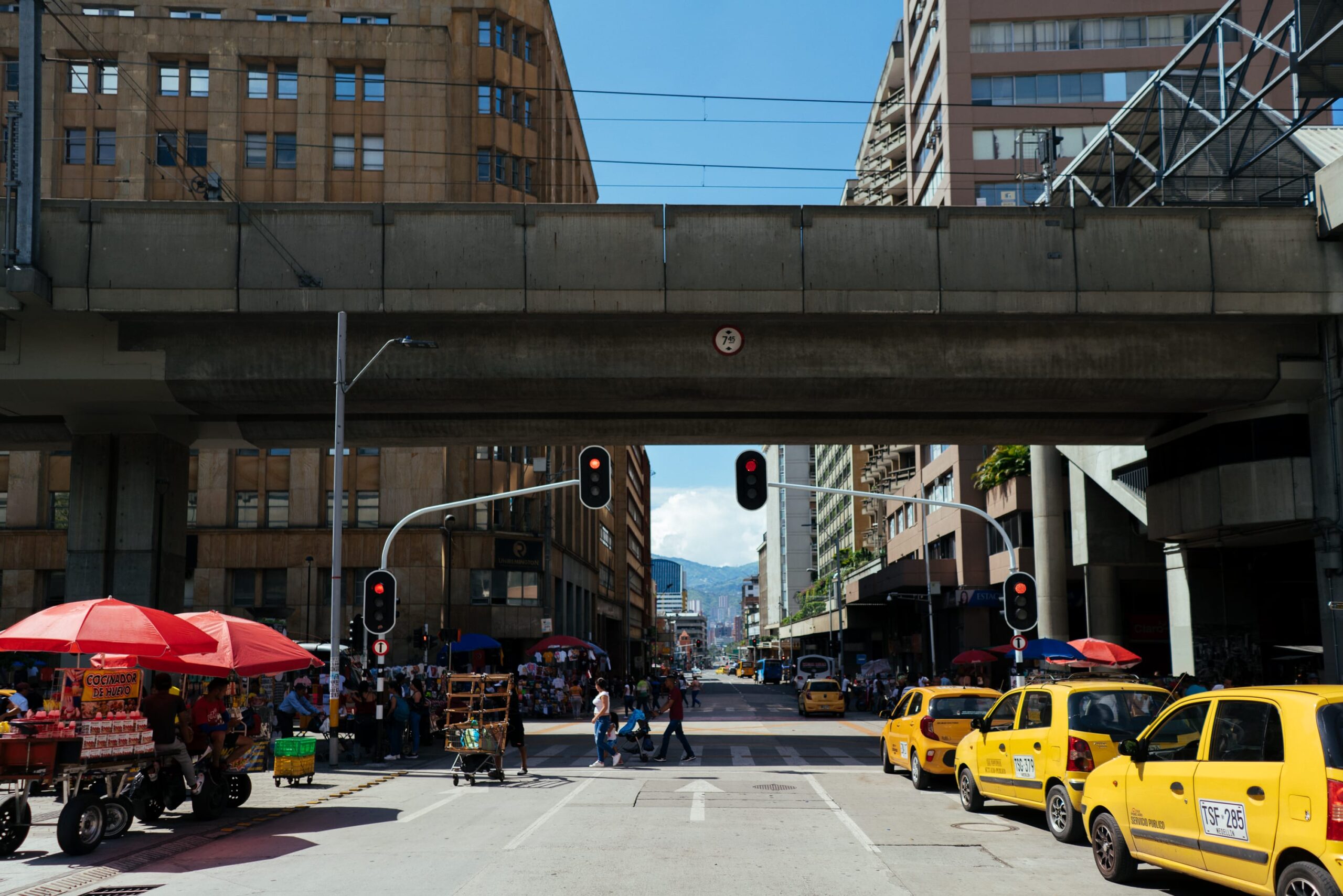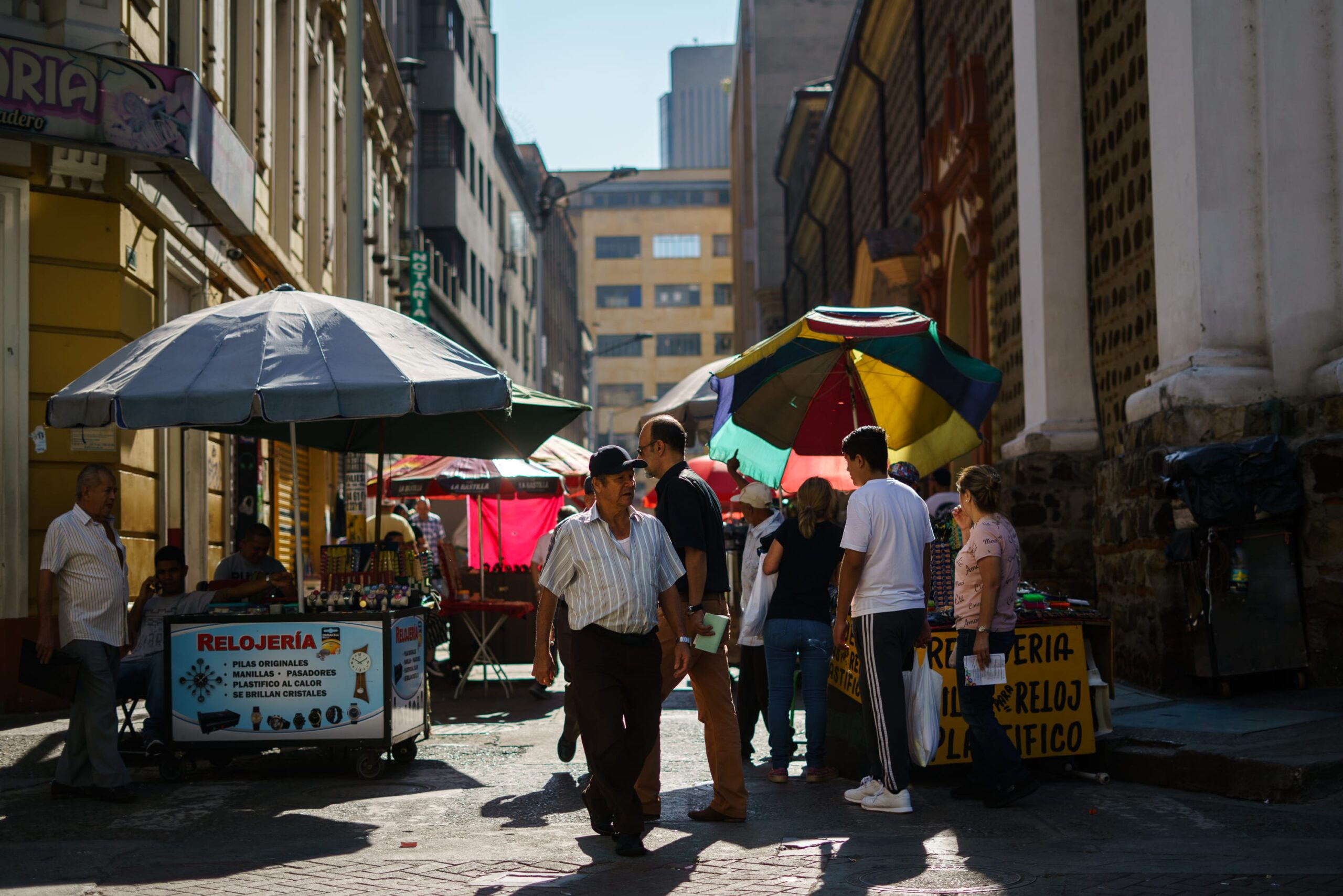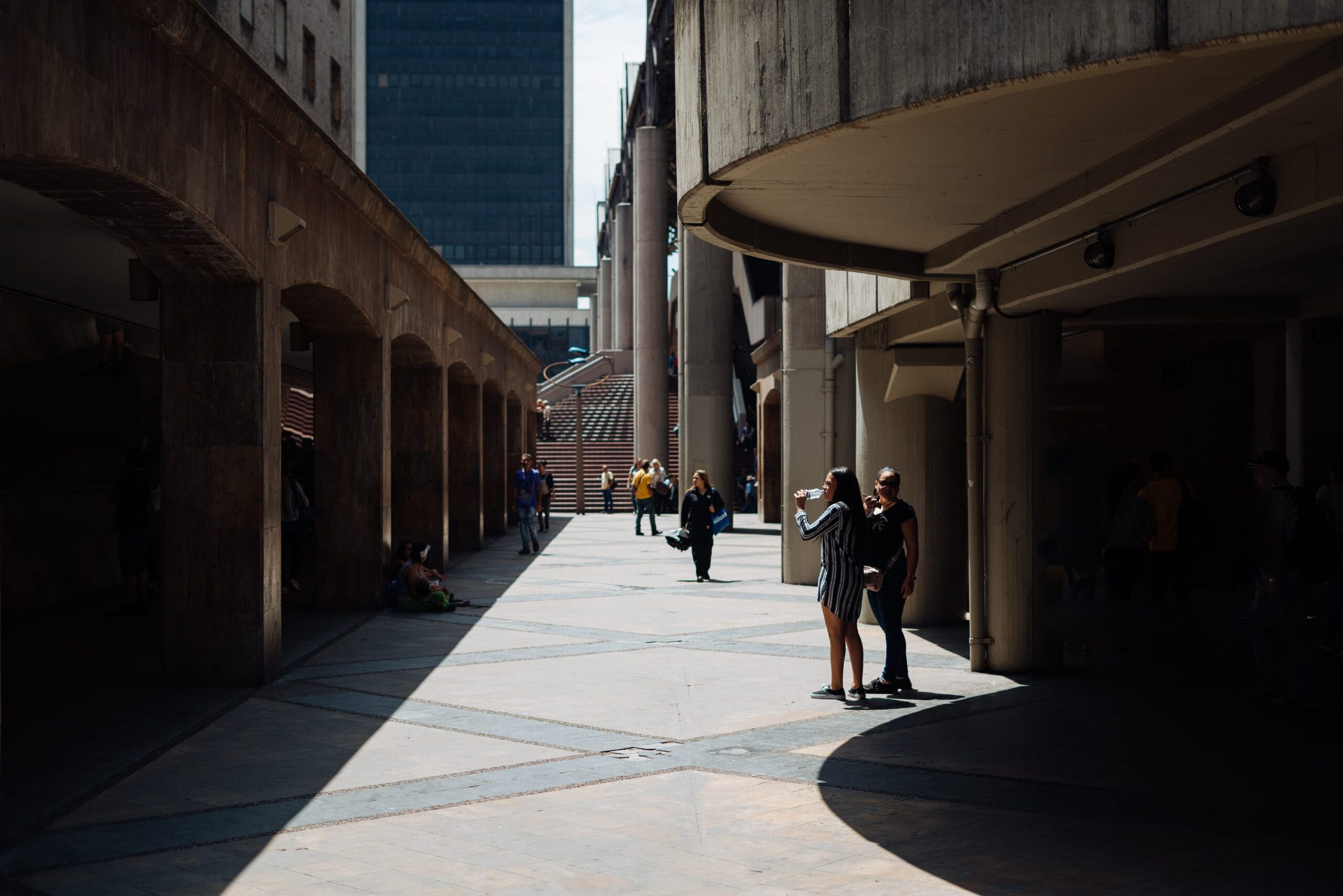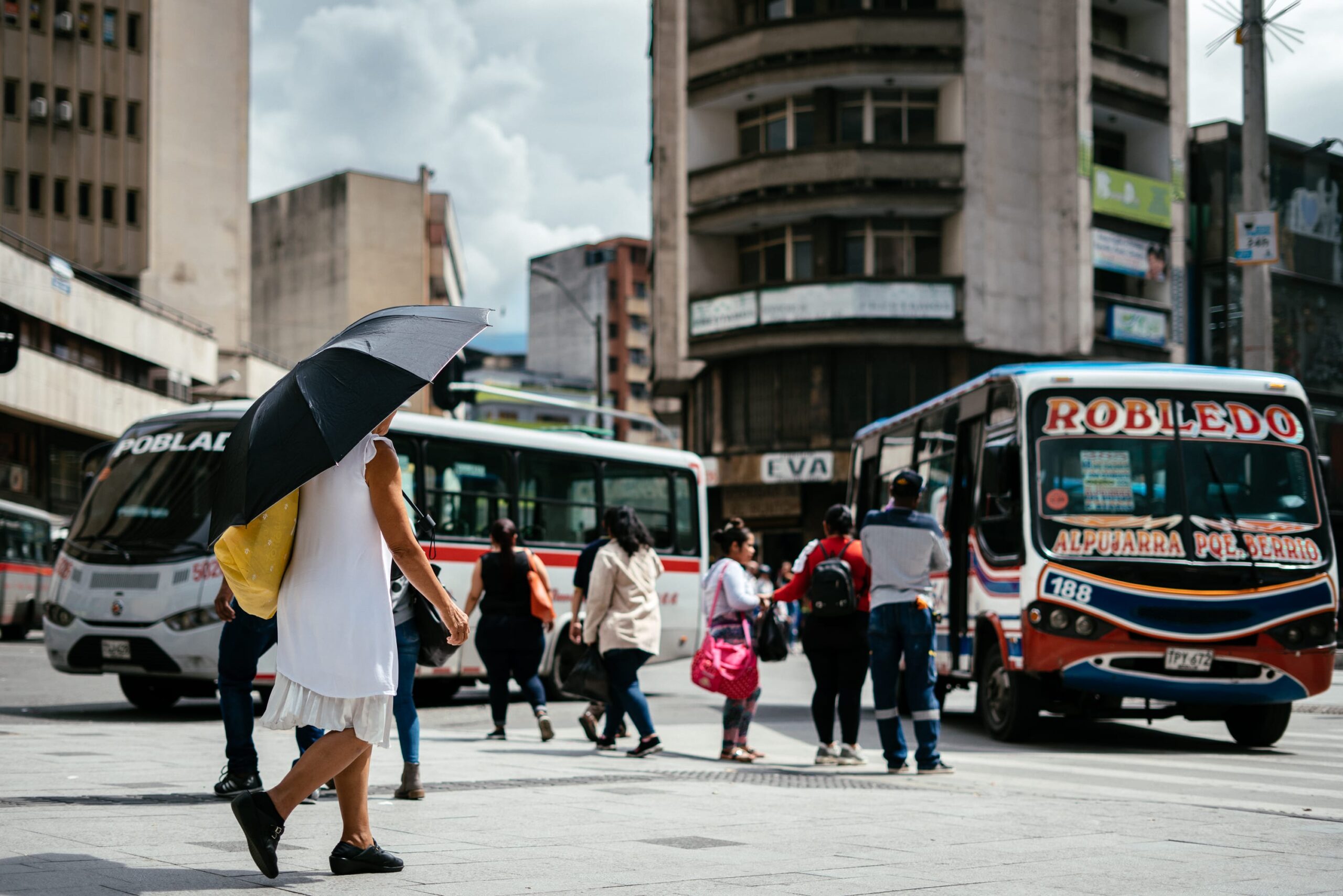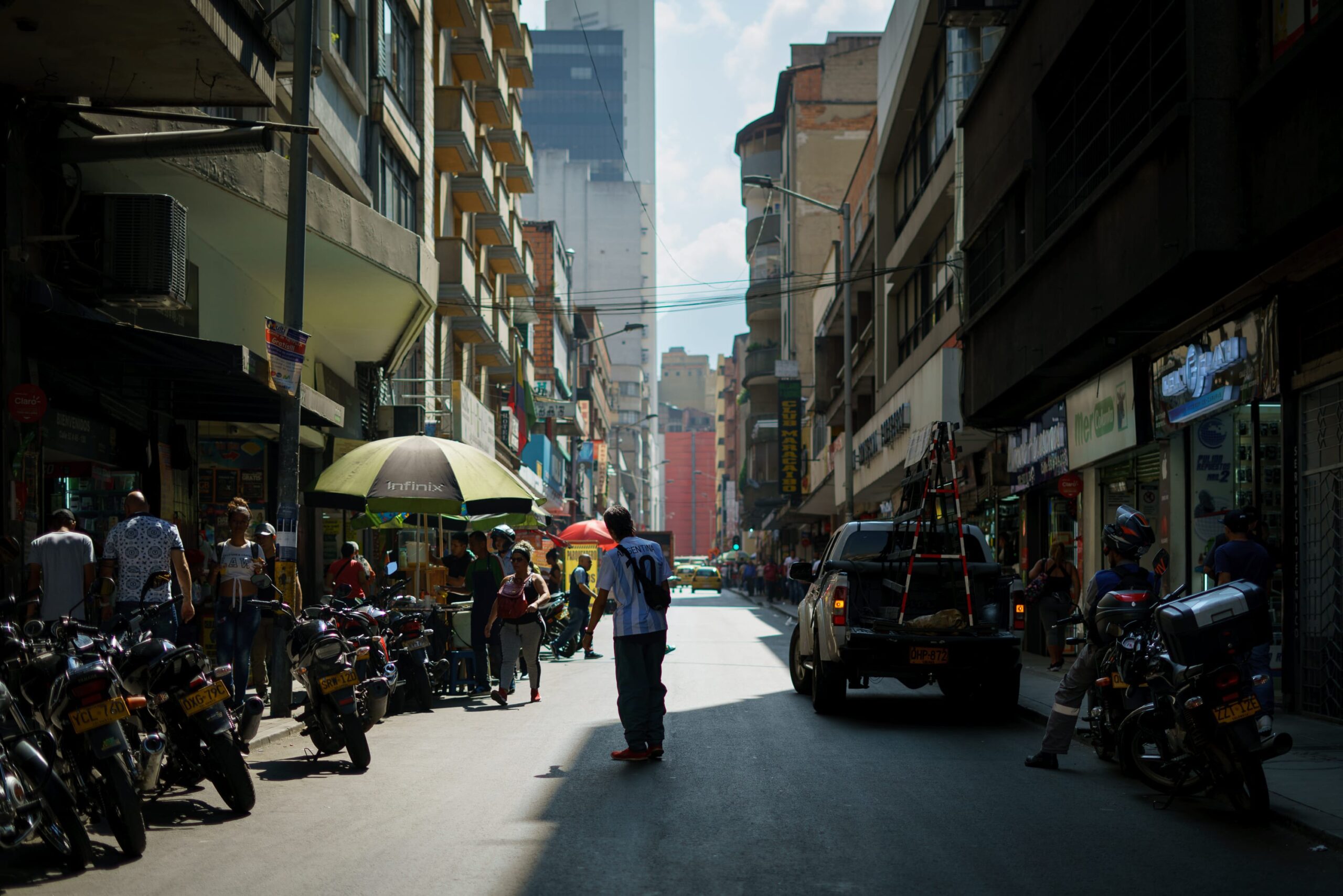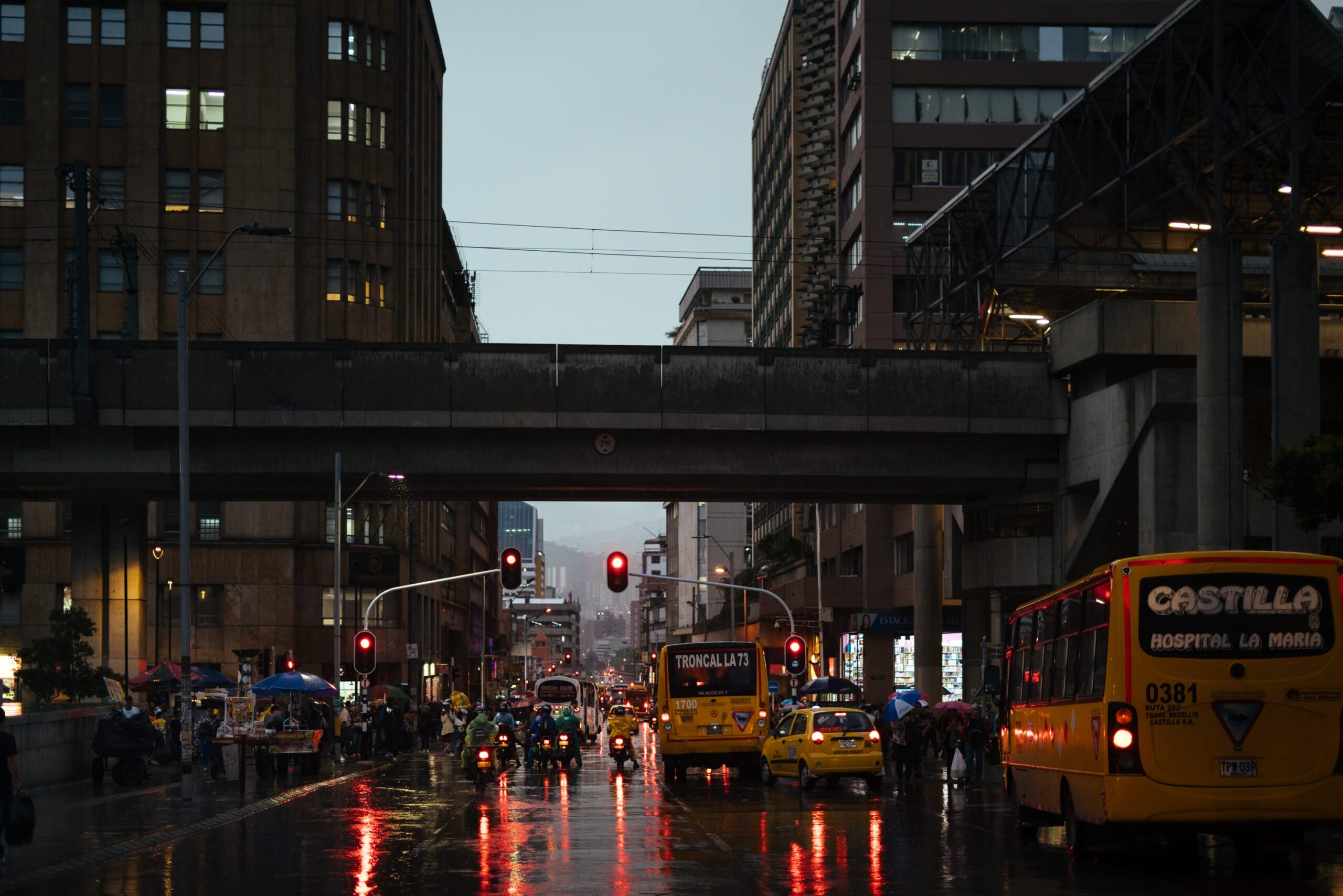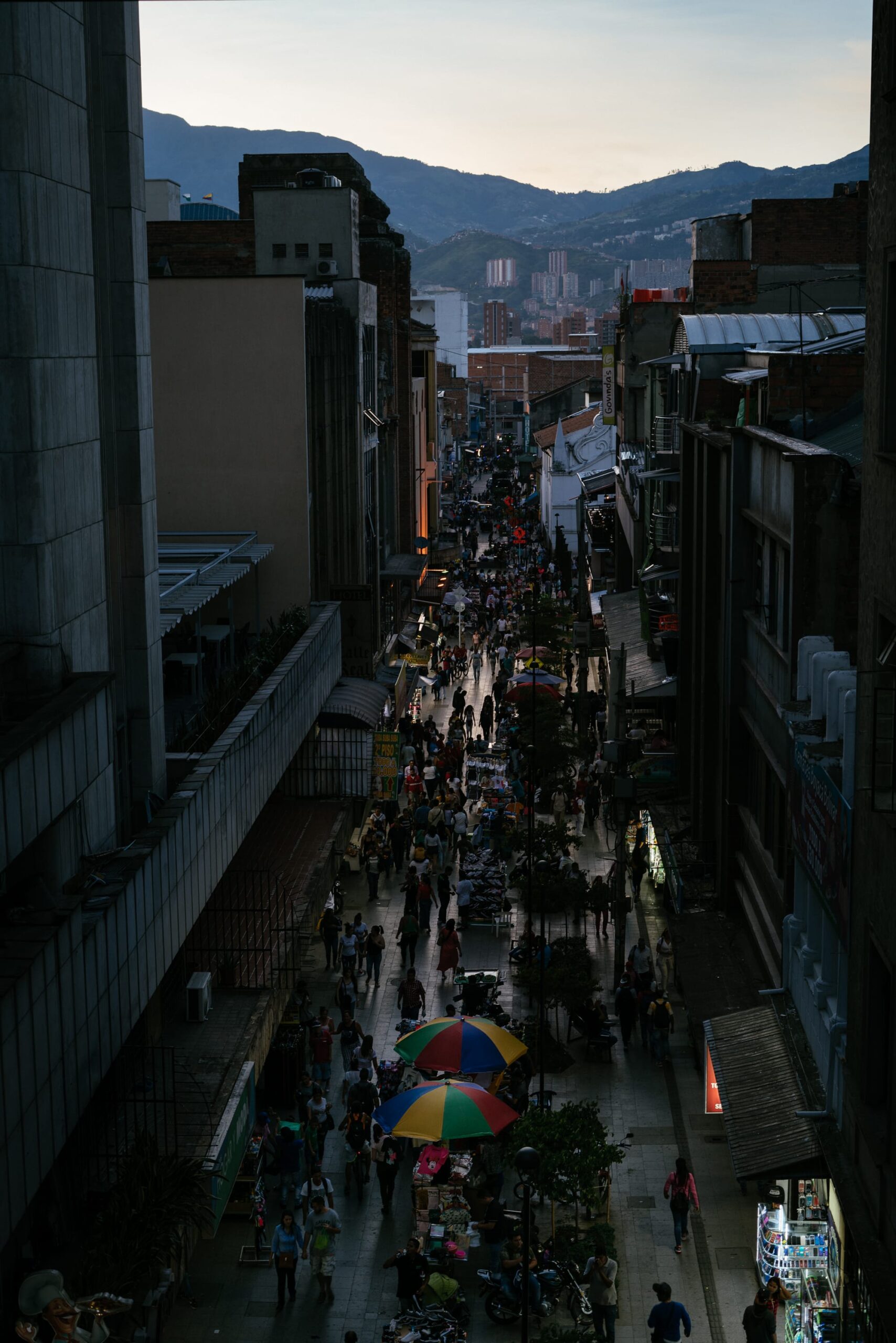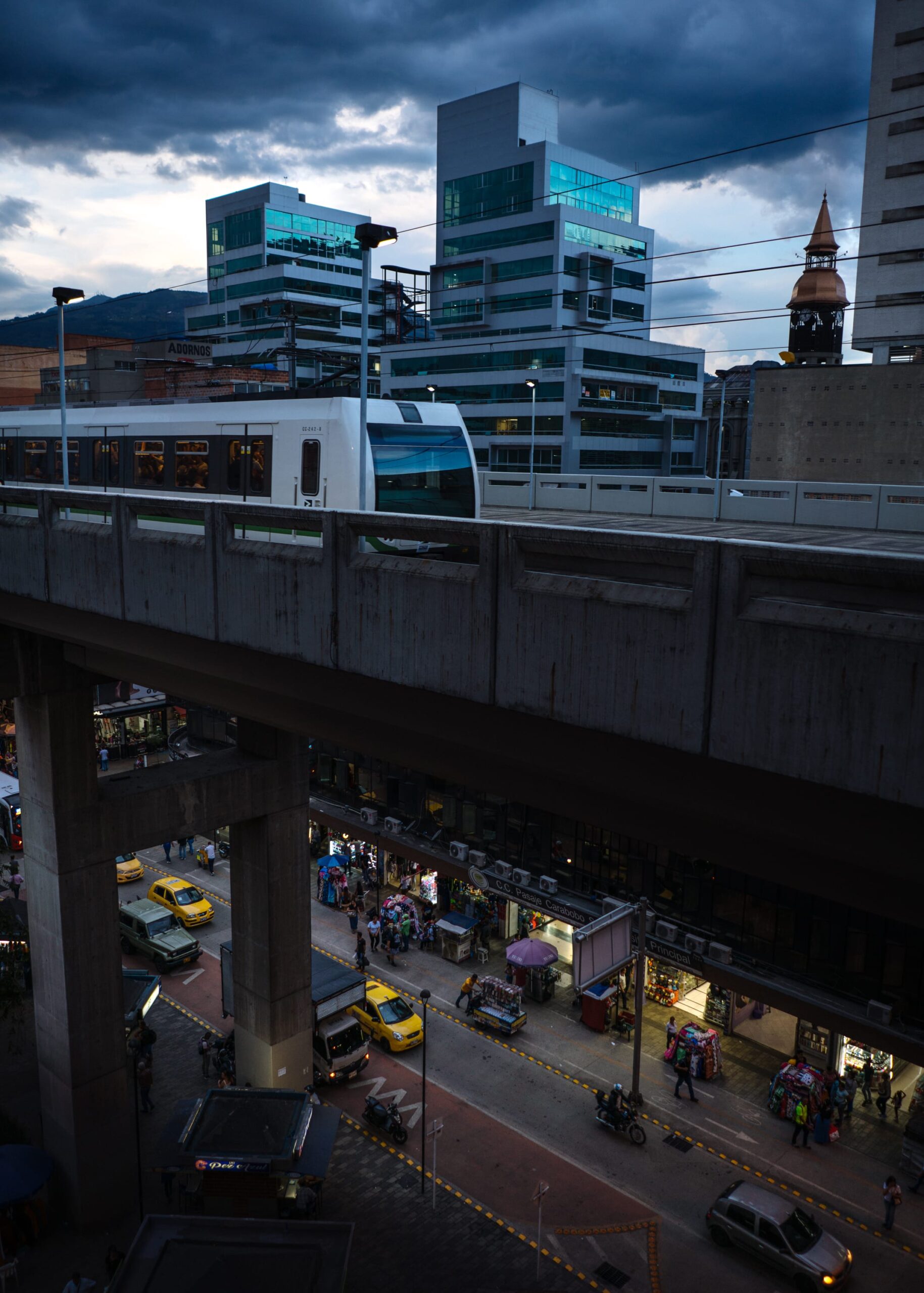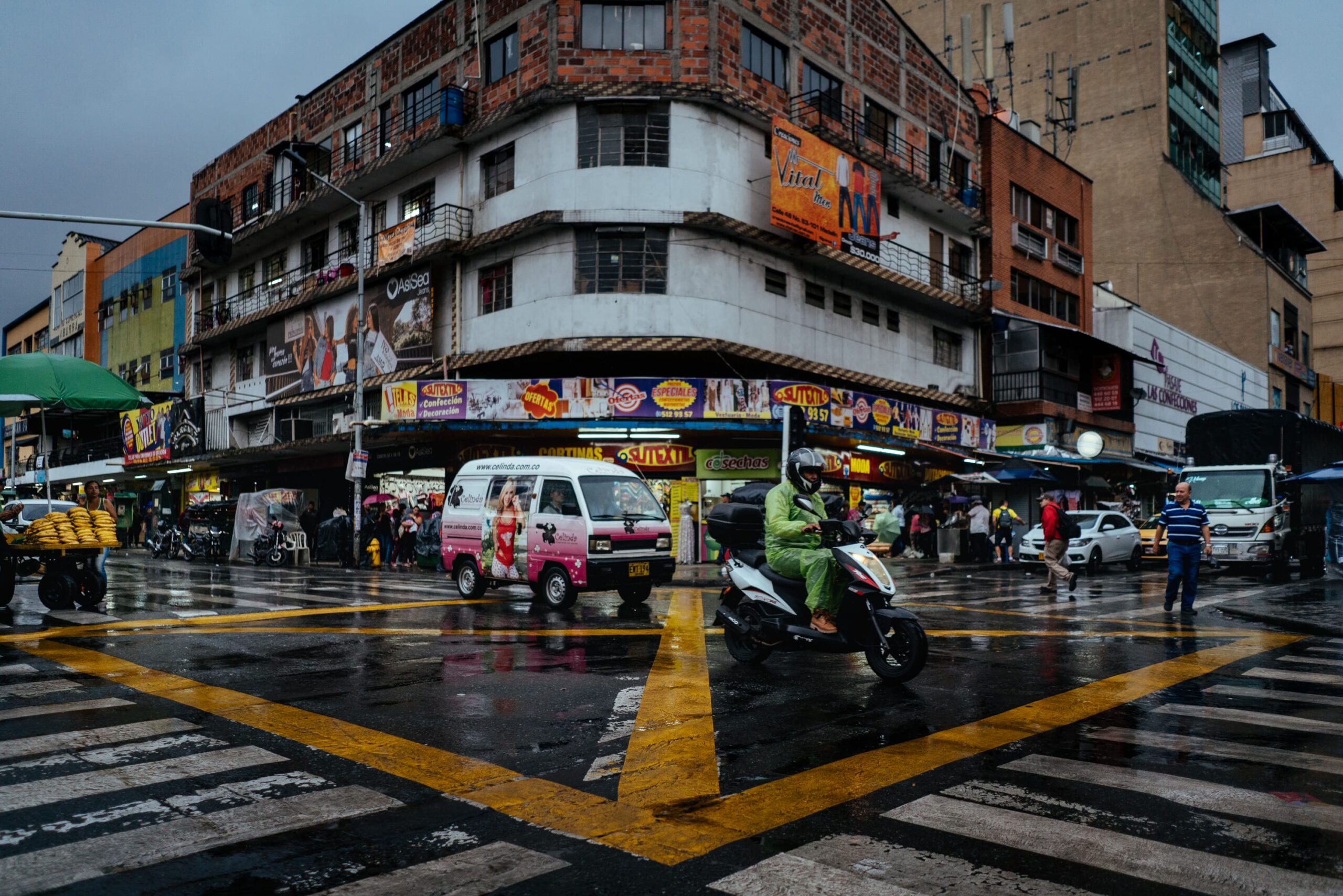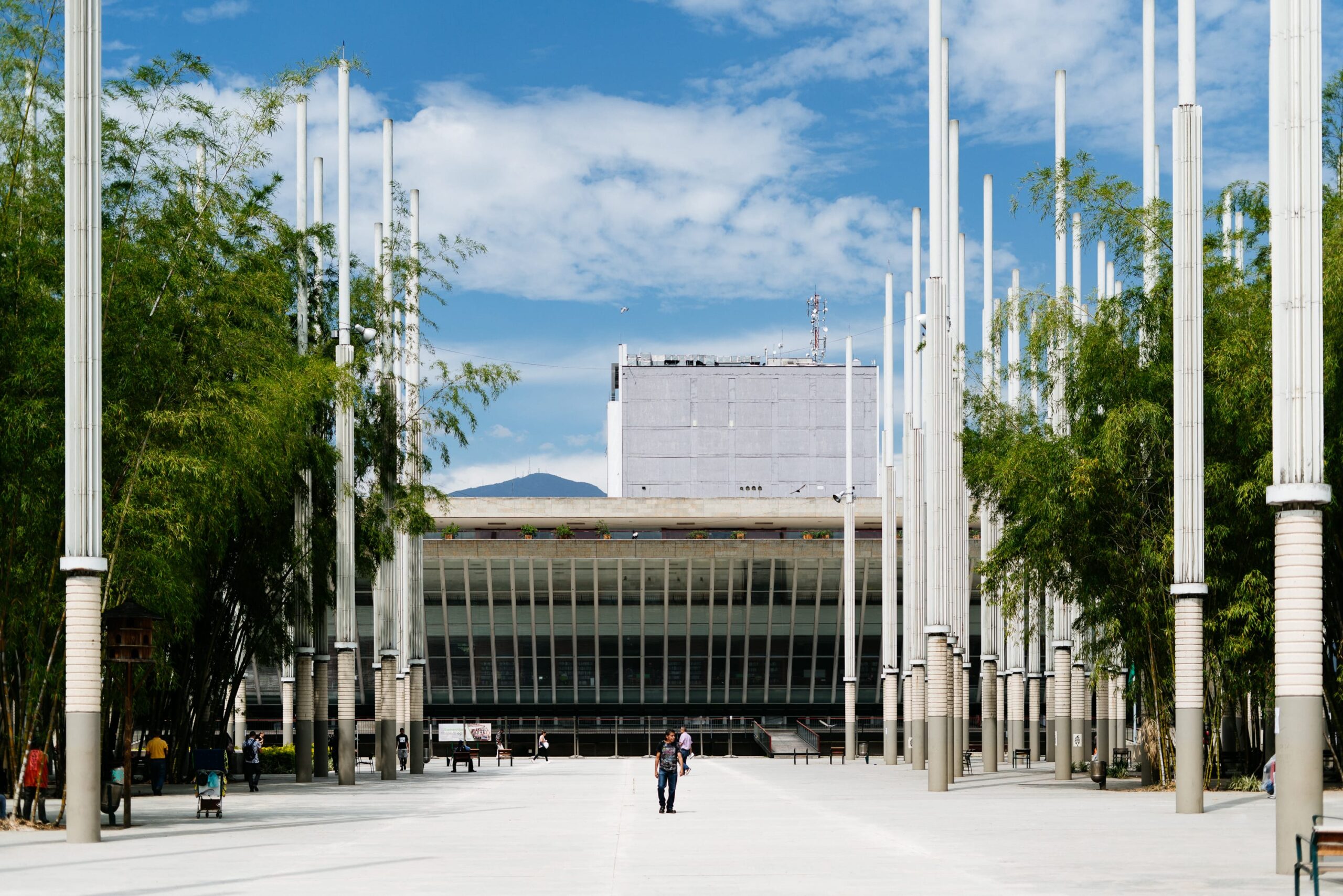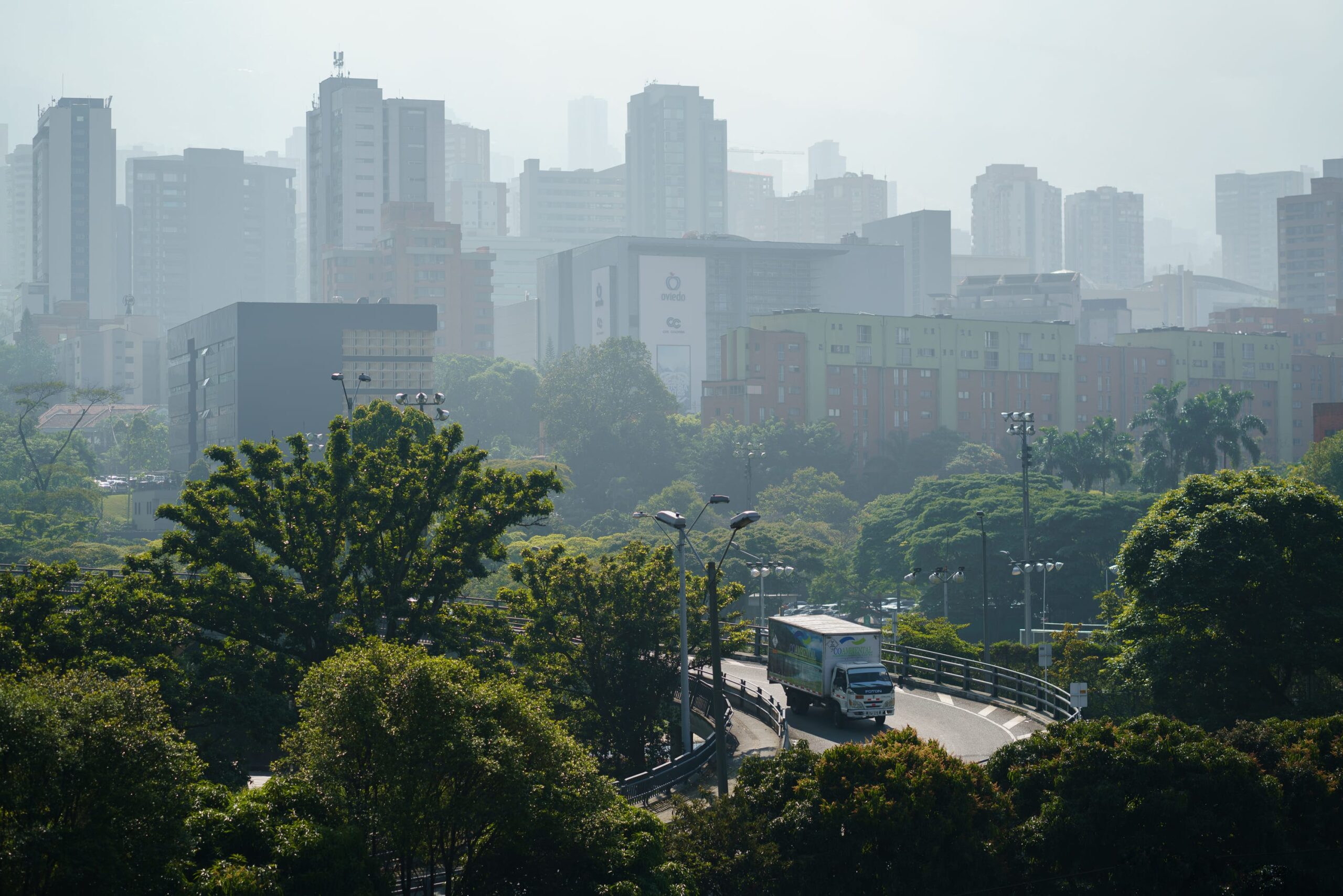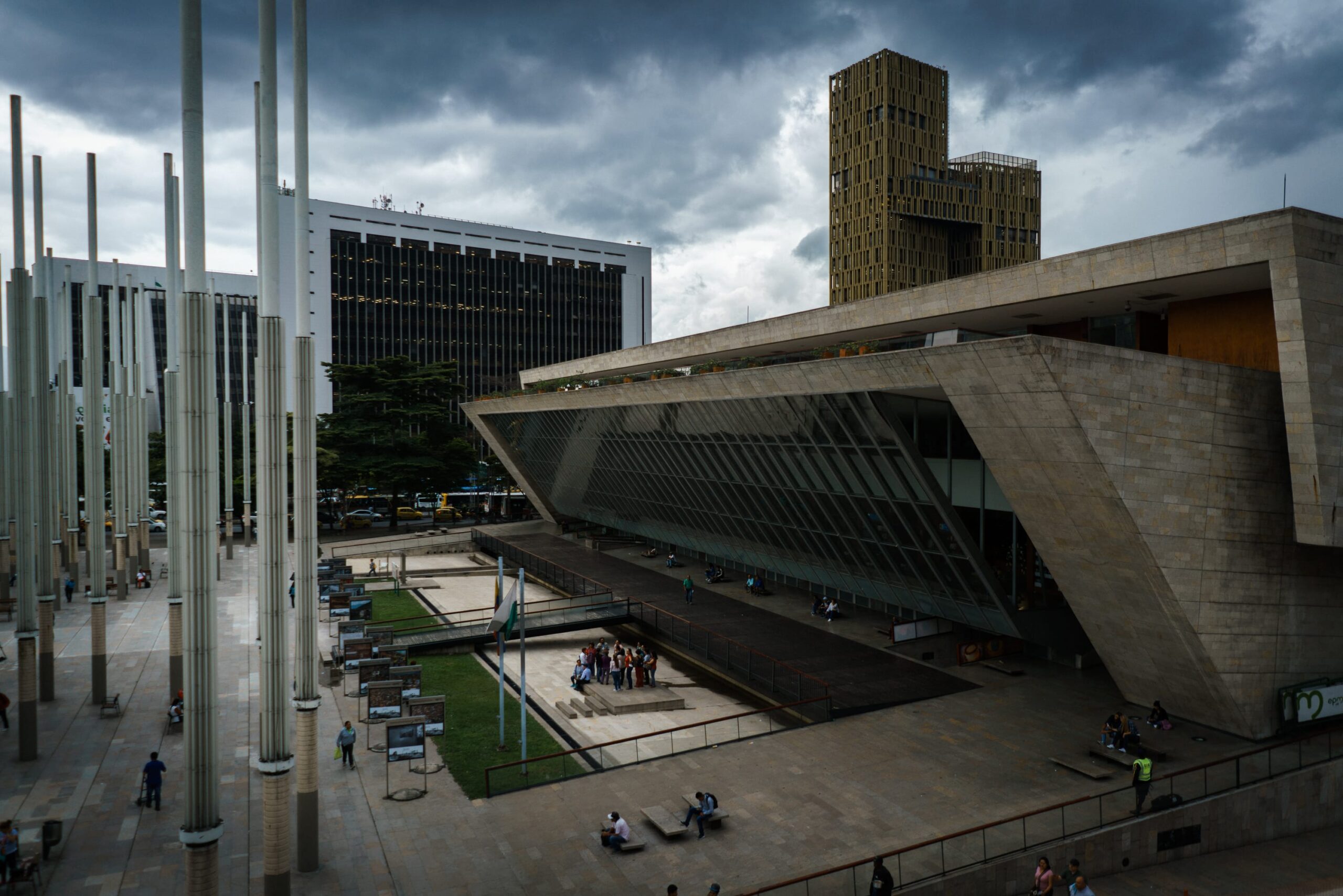Neighborhoods: Medellín Pt. I
Medellín, a city that doesn’t exactly scream “postcard-perfect” or “paradise,” but oh boy, does it ooze with vitality and authenticity. The locals affectionately dub it the “city of eternal spring” thanks to its weather that’s consistently on point, especially during my three-month stint. As I touched down, I was mentally bracing myself for the unknown. My previous encounters with South and Central American cities had been a mixed bag; San José in Costa Rica had been a real let-down, and Panama City had taken some warming up to.
Given my trepidation, I decided play it safe for the first week, nestling myself in the rather touristy or expat-friendly part of town. I found a swanky apartment on Airbnb because, hey, sometimes you just need a touch of luxury when you’re easing into a new city. To my pleasant surprise, there was a skate park practically right next door, reigniting my long-forgotten passion for rollerblading. The park was an odd duck, brand new but oddly pint-sized and decked out with a dizzying array of colours. It didn’t hold up well in the humid climate, with daily deluges nearly drowning the place. I didn’t frequent it much, though, as a quick Google Maps exploration revealed better options elsewhere.The initial neighborhood I landed in had lush green ribbons of jungle running alongside the rivers cascading down from the encircling mountains, a constant reminder that I was still deep in the Colombian jungle and not just any concrete jungle. This area had a glossiness uncommon in Colombia, with upscale restaurants in every direction and Parque Liras serving as the go-to spot for affluent locals and tourists looking to paint the town red. Plenty of choices abounded, but they all felt somewhat generic, exuding that typical Euro-American vibe of a party district. This recreational enclave stood in stark contrast to the residential Poblado, a neighborhood that struck me as devoid of character, defined by high-rise apartment complexes, community pools, gyms, and ever-present doormen. Nothing particularly captivating for my taste; it seemed like the locals were striving for a clichéd Western lifestyle with malls, Starbucks, gyms, bars, Instagram-worthy moments, fancy cars, and high-rise condo living. A Colombian interpretation of an American dream, perhaps, but not something that tickled my traveler’s fancy. I’d seen better renditions of this concept countless times before.
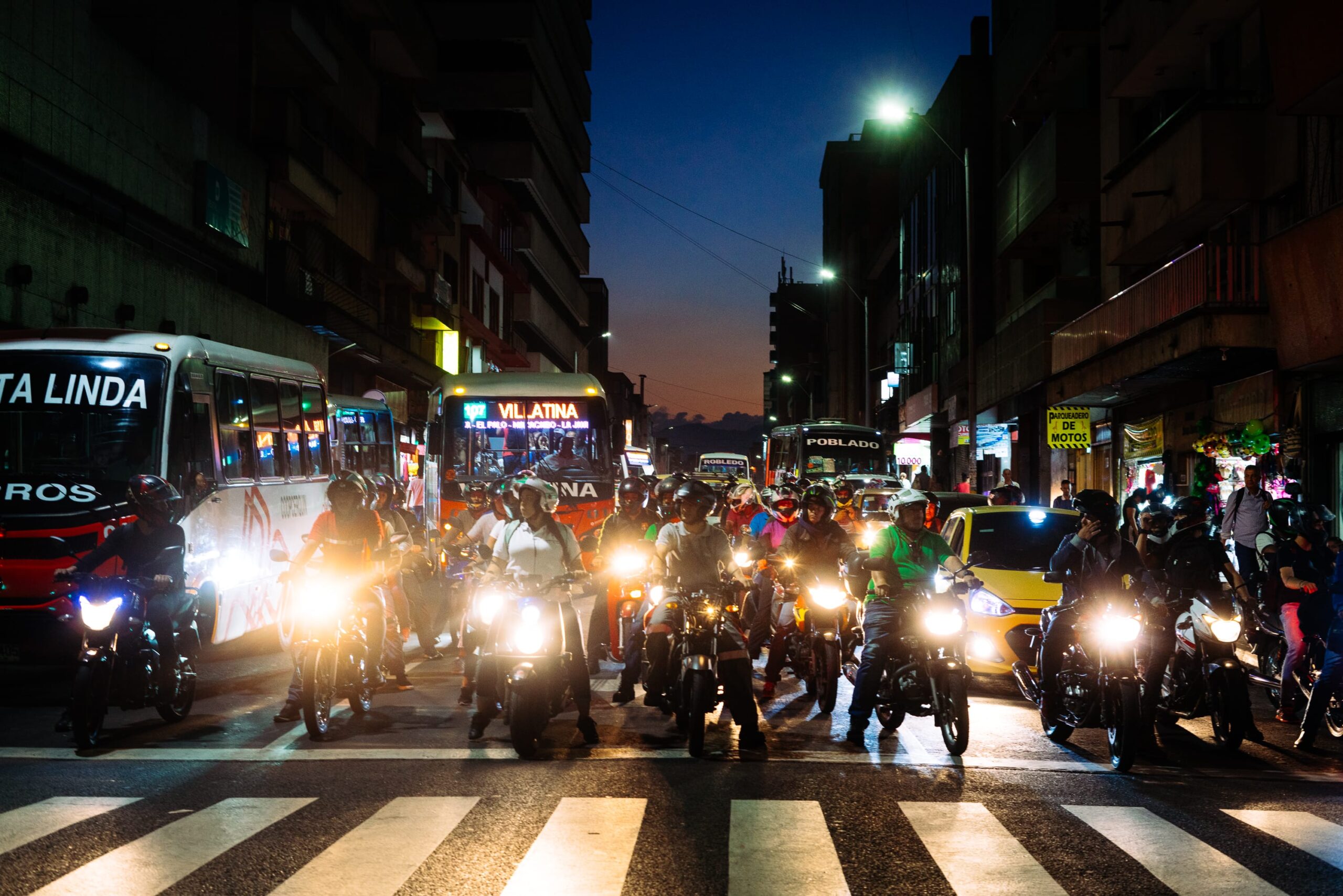
Motorbikes, Medellín, Columbia
Dealing with the heavy traffic in South-American cities is a lot better on a motorbike. To the surprise of many in the western world it is completely legal and acceptable to skip the line to the front, pass all the buses, trucks and bigger vehicles to get to the pole position, it makes sense as motorbikes accelerate a lot quicker than cars etc. That’s why there are only motorbikes in the first row. Definitely a funny feeling to get the camera out while standing right in everyone’s spotlight.

Comuna 13, Medellin, Columbia
I went up to Communa 13 as one of my first tourist-photography missions. The place didn’t disappoint, I went a couple of times in the end. This was taken on my second excursion, right before the lights go out and everybody has to leave. While the place seems all friendly and has a polished feel in the daytime I wasn’t sure about nighttime. There might be a big risk of venturing into old habits, at least afterhours. I didn’t want to push it and went to the metro after this, the place looked pretty sick during the last minutes of blue hour.
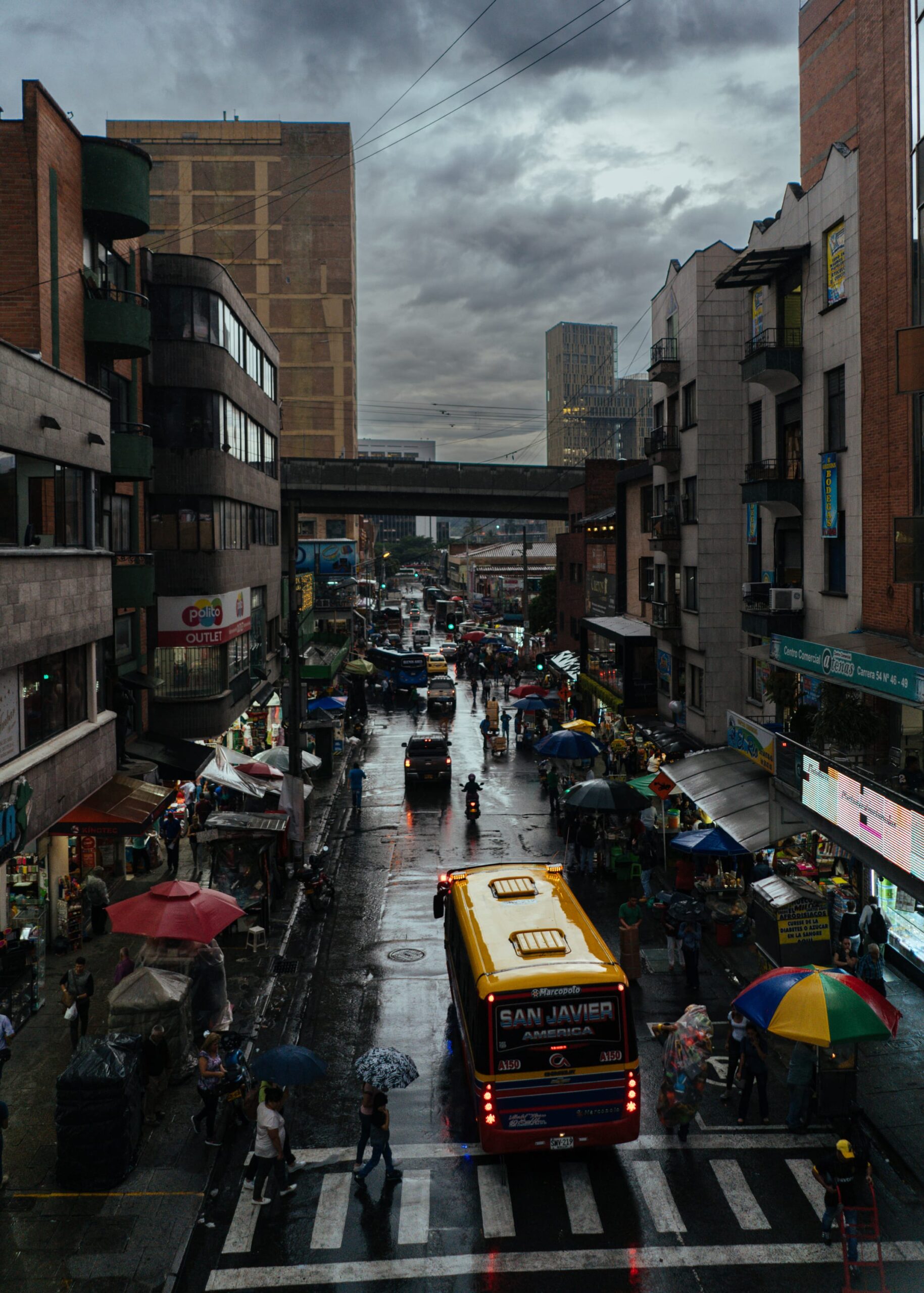
During my initial city exploration, I found myself on a dual mission: locating some quality weed and scrutinizing the high-rise apartment buildings that peppered Poblado. Suddenly, fate intervened as I bumped into a fellow I’d met on the bus ride from Nicaragua to Panama. It was comical; we had already passed each other when I did a double take and asked, “Hey, weren’t you on that bus?”
We exchanged pleasantries, and he hooked me up with a contact who’d send me a comprehensive drug menu via WhatsApp. While I opted for the green stuff, they had quite the selection, ranging from regular to premium, organic to ice, and even hash. Prices were pretty sweet for a tourist like me, though the local skater crew at the park mentioned it was on the pricier side. But hey, I couldn’t complain, especially when the alternatives were less than stellar. I stuck with the regular stuff – no need for the flashy, colorful bags of premium Cali goodness. It’s all smoke and mirrors anyway, especially that shiny premium stuff. Organic was my jam. However, the downside was the waiting game; the entire process, from placing the order to the confirmation of the delivery guy’s imminent arrival, could chew up a whole day, depending on their schedule. And the exchange itself? Awkward. Most of the places I stayed had befuddled doormen who didn’t readily hand over the package; we’d trot to the elevator as if it were a routine food delivery. The delivery guy on his bike was equally baffled, mainly because my limited Spanish and lack of phone data made communication a bit of a circus act. Motorbike deliveries were the norm, though, and despite the waiting, the service was reliable, the quality top-notch, and it kept me from venturing into the unknown streets, which I had dabbled in for a day or two. Even after an extended stay, finding green stuff, especially in touristy areas like Poblado, felt like hunting for a needle in a haystack – just dead ends. The local neighborhoods, on the other hand, felt too insular to casually inquire about drugs, while the tourist hotspots were, well, too touristy (while managing to look sketchy). Cocaine, on the flip side, was as easy to spot as a traffic light in almost every downtown park. A few elderly ladies discreetly stashed keys in their bras, trading them for a few pesos. It might sound intriguing to some, but I’d learned my lessons with other substances. Sometimes, knowing what you know is the best way to stay clear of trouble. I’d heard that once you experienced the allure of cocaine’s effects, it could be a lifelong yearning. I chose to save myself the headache, contenting myself with the challenges posed by weed, cigarettes, coffee, and sugar.
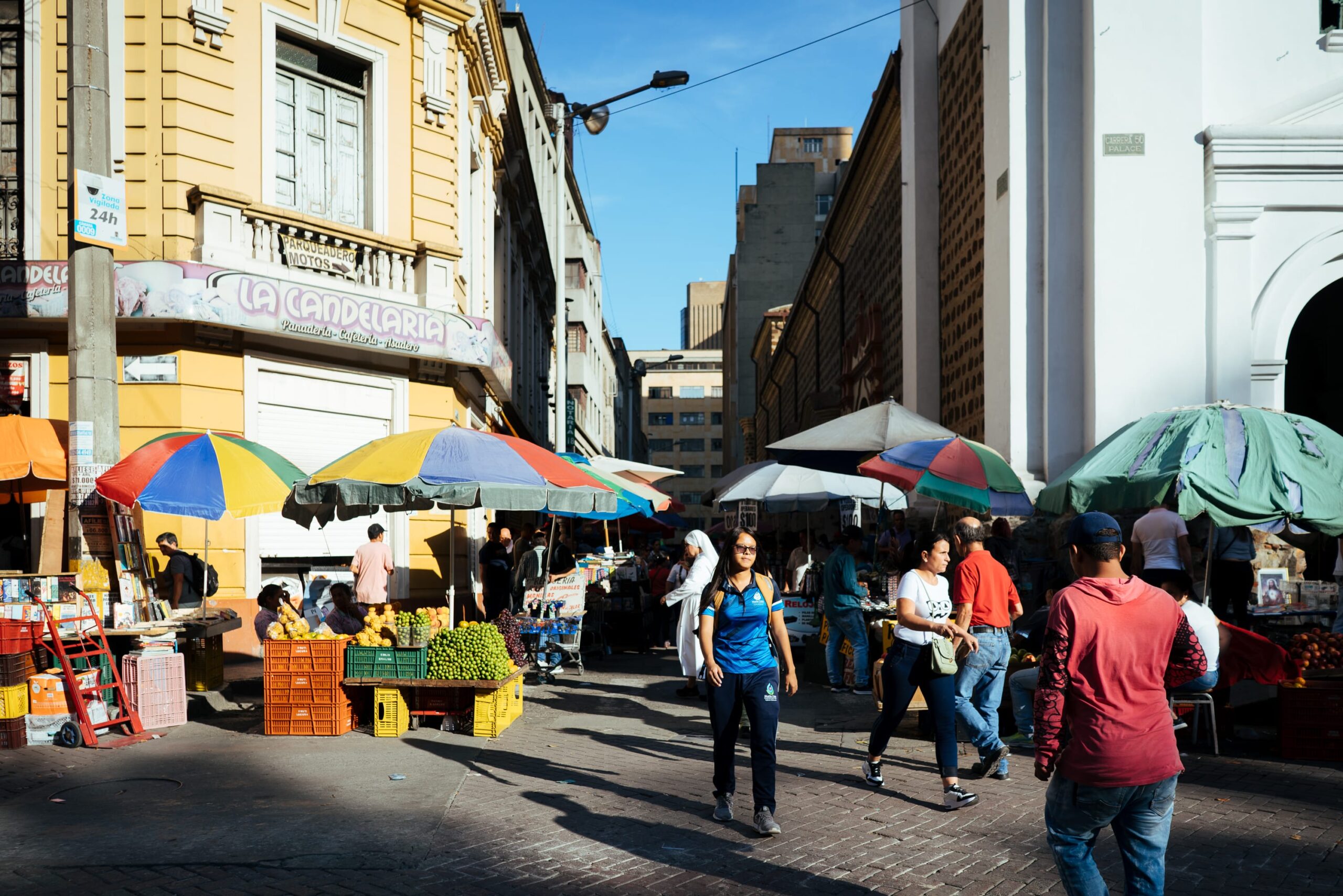
Parque Berrio, Medellin, Columbia
After I moved from the touristy part of Poblado to the city centre I was able to stroll around down town everyday. No need to take an exhausting metro or bus ride, I was able to walk out the door and be right in the madness of El Hueco, Medellins shopping district. I loved walking around the centre, discover the place, create a mental map, look for good coffee, lounge around and people watch.
Now, let’s switch gears to the touristy side. One of the must-do experiences in Medellin involves a visit to the comunas, neighborhoods scattered across the valley’s flanks, surrounding the downtown area along the riverbanks for miles on end. Think of them as your classic favelas, but without the Brazilian flair. These little abodes and concrete hideaways were crammed in tight, teeming with life – and yes, a fair share of chaos.
Think plastic litter, roaming dogs, narrow alleys, steep staircases, a spaghetti of cables overhead, graffiti galore, and an army of people going about their business. Typically, these neighborhoods are labeled no-go zones for tourists, but Medellin has turned some of them into tourist-friendly havens. They even managed to transform the locals from potential gang members into tour guides, guiding intrepid souls through their comuna. Tours could be booked in town, right there on the spot, or not at all. Being the lone wolf I am, I chose the latter option, which, in hindsight, wasn’t the wisest choice. A guided tour might have made photography a lot easier. The truth is, there wasn’t much to do aside from wandering along the main road they’d bulldozed through the barrio, maybe venturing into a side street or two. But it did offer the postcard views I’d seen in TV series like Narcos – valleys and hills adorned with simple concrete structures and modest homes. That’s precisely what I’d come to see, and the colorful murals along the main road added a much-needed dash of vibrancy.
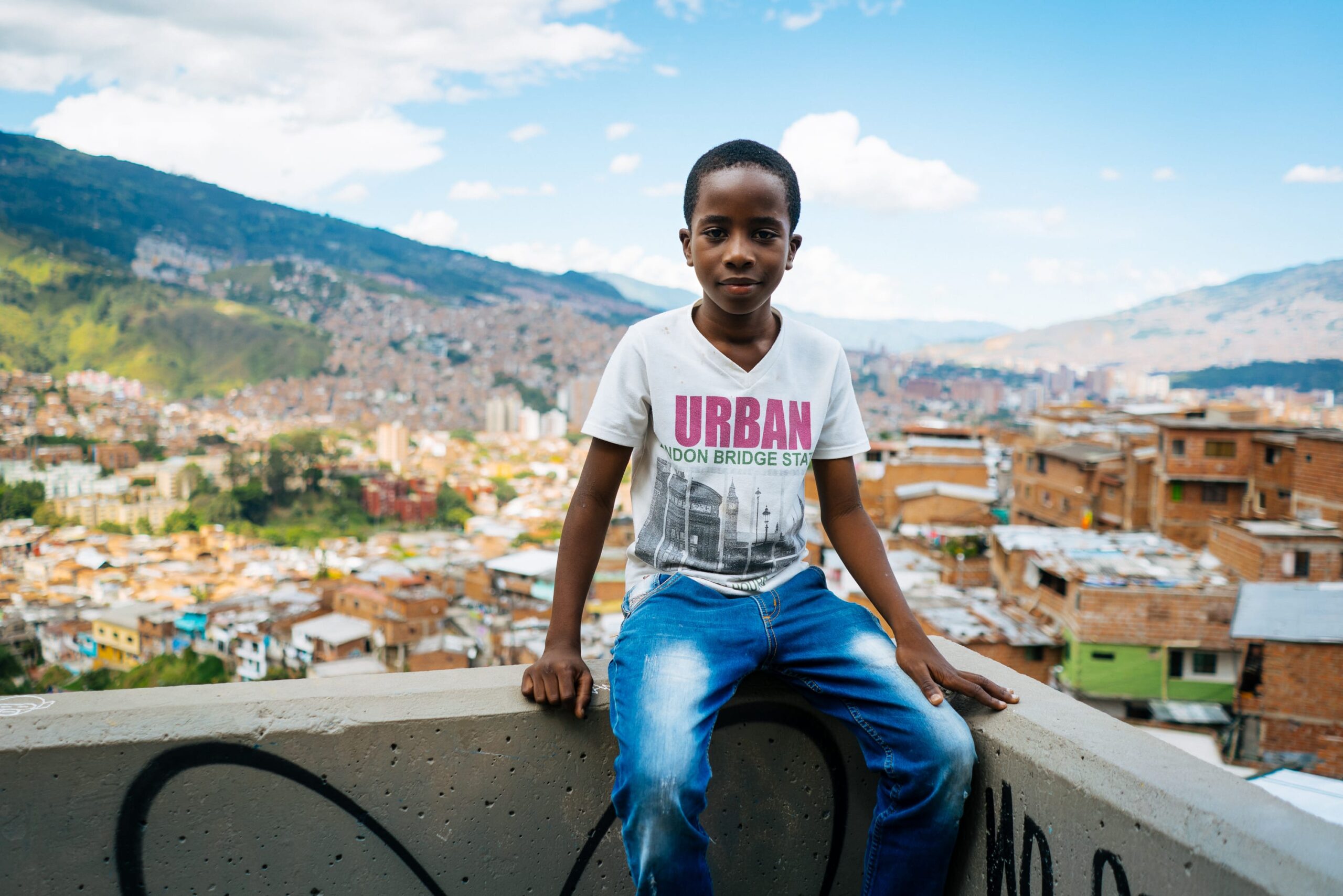
My man, Medellin, Columbia
Getting those pictures of the locals is always challenging. I could just go and take it, without asking. This might end up with a bit of trouble, people don’t like to be photographed with real cameras (while the mobile phone is absolutely fine) and might start to ask (angry) questions or even worse, get mad. The other way involves trying to be nice, hustle a bit of interest, ask questions, establish some sort of friendship. Then, once the conversation finishes, ask if it would be OK to take a photo. Works most of the time. The third option is to just pay, hand out a bit of money to pay for their modelling efforts. My little guy made some money that day and I’m sure he wasn’t only posing for my camera.
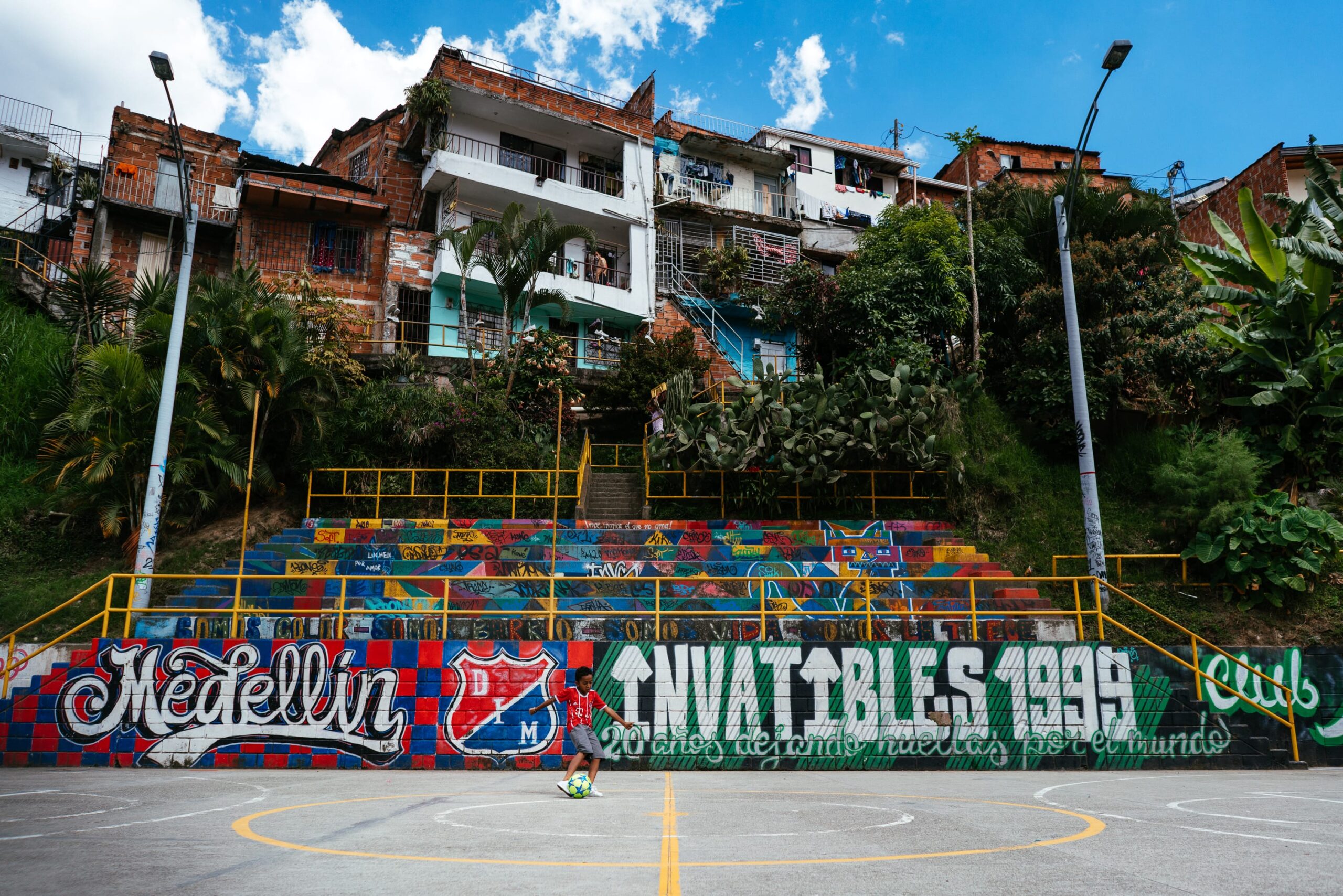
After a few weeks of city exploration, I found myself at a crossroads. I’d been living the “travel and sightsee” life for quite some time, so I decided to revisit one of my old passions – rollerblades. The skate park right by my first Medellín digs had sparked my interest, and a quick Google Maps search revealed several other skate parks worth a visit. Once the idea took root, the next logical step was to score a pair of rollerblades since I hadn’t packed any.
I’d left my trusty old pair in a Barcelona trash can before jetting off to Costa Rica; they were pretty beaten up after our FSK filming adventures. After some price and availability scouting, I settled on a pair of Roces Nils Jansons M12s offered by a local skate shop. Online ordering wasn’t a thing and the rollerblade market in Colombia was pricey, thanks to hefty import duties. I snagged them in size 42, which turned out to be tiny. However, with some intense heat molding using a lighter and by creating a liner foam massacre, I made them work – albeit uncomfortably. These blades weren’t exactly the best I’ve had (though they sure looked cool, M12s were all the rage at the time, courtesy of the illustrious Kelso brothers), but they got the job done during the two to three months I skated the city’s parks. Street skating was too hard; they were just too unsupportive, tiny, and maybe even downright painful. But in the park, they shone, offering pinpoint control in a compact package. Their flimsiness was actually an asset, considering there weren’t any bone-jarring drops to worry about, and the terrain was remarkably consistent, featuring smooth transitions and a fluid layout throughout the park. The Roces Majestic 12s were the only blades I could find that came with a stock flat setup. Anti-rocker was out of the question after all my big-wheel escapades. To my surprise, the Roces frame proved impressively sturdy, likely the only non-flimsy part of the skates, maybe even keeping them from folding apart. The next few months saw me rolling around, once again indulging in my passion, but this time at 1,500 meters above sea level. It took some adjusting; everything was noticeably more exhausting at these heights. Many people flocked to the area for professional cycling training amid the rolling hills surrounding the city.
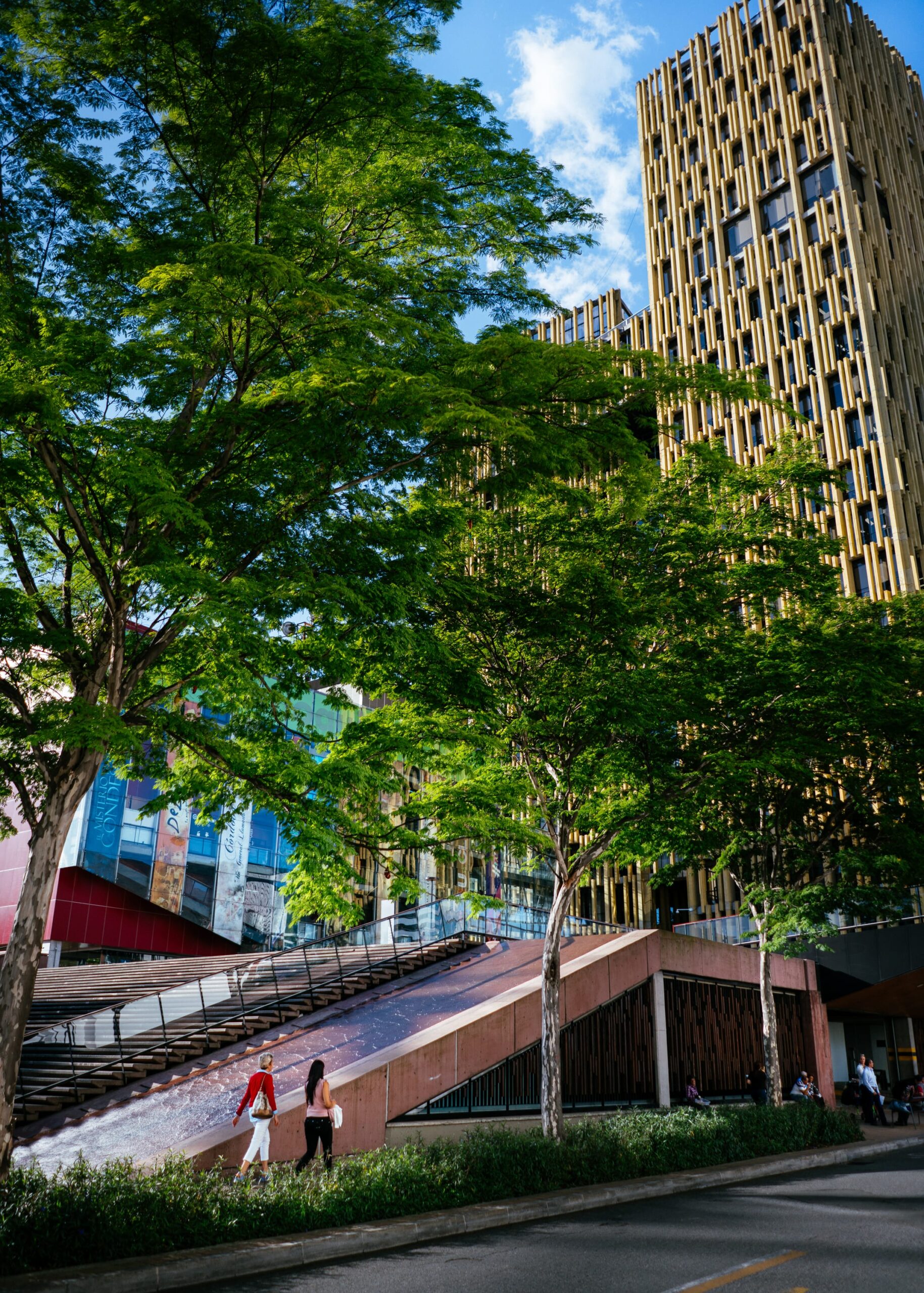
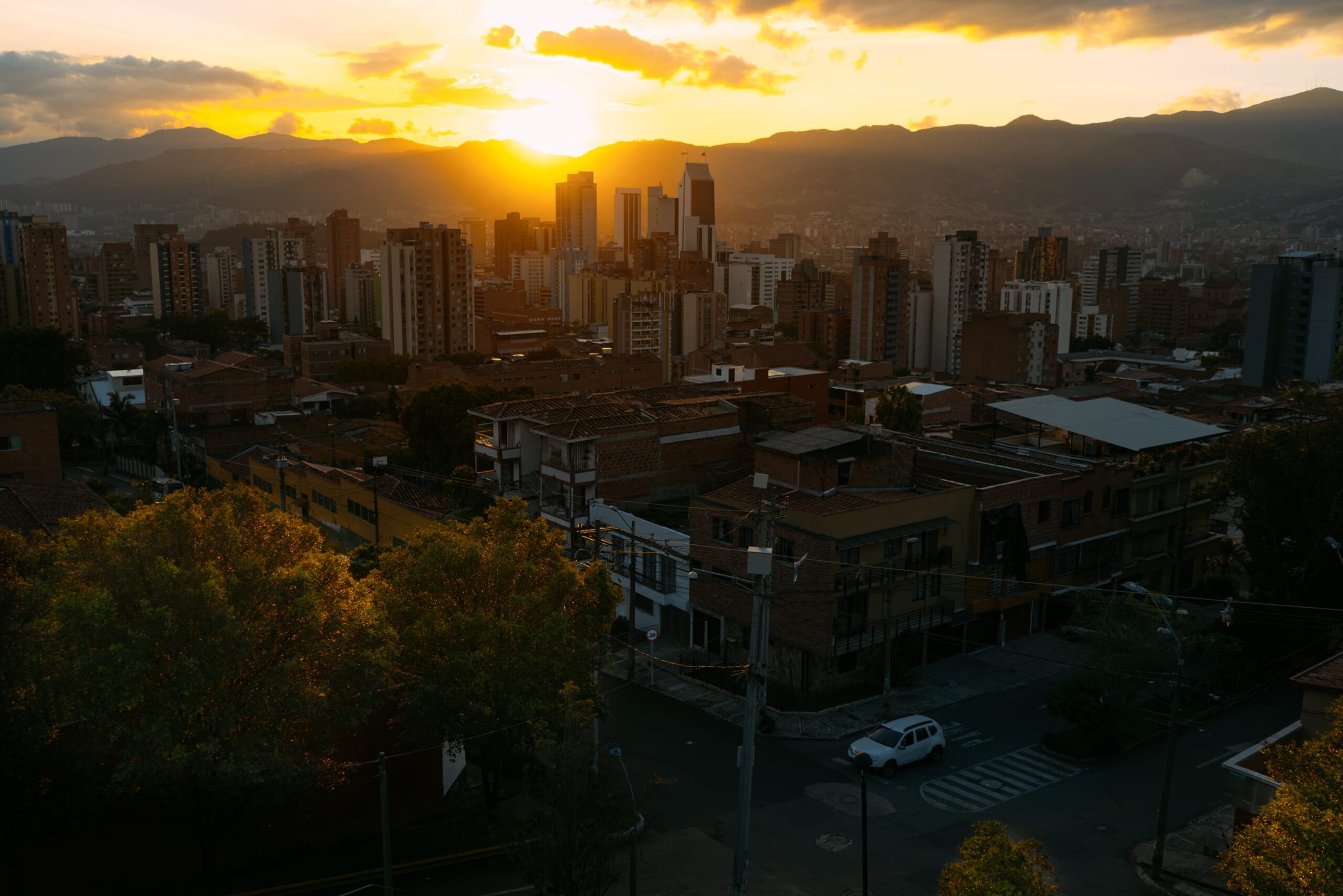
Sunset, Medellín, Columbia
I always felt so sketched out walking around the city trying to find good photo opportunities. This was a little viewpoint on a hill just a bit up the road from one of my apartments. Normally nothing to worry about, but always being so high made it difficult to deal with all the attention that the regular Columbians gave me. Also considering it being such a dangerous place didn’t help. Backpack-in-the-front wearing locals down town would stop and advise me to immediately hide my camera, thinking I was absolutely crazy. Incidents like these never boosted my confidence and my excursions became less and less.
